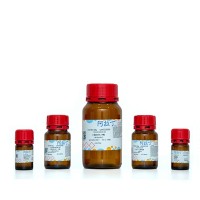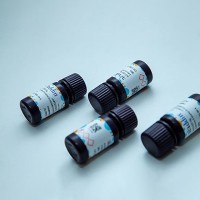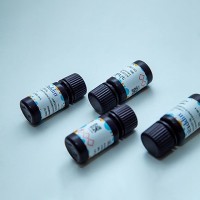Inverse PCR
互联网
Isolate partially purified chromosomal DNA using a modification of the Magic MiniPreps DNA Purification System from Promega (see atta ched) as follows.
- Spin down 500 μl of an overnight culture in a 1.5 ml microfuge tube.
- Resuspend in 200 μl of
Tris-HCl 10 mM, pH 8.0
& #9; EDTA 20 mM
Sarkosyl 1%
with 5 μl of RNaseA 10 mg/ml
- Incubate at 65°C for 10 minutes.
- Add 1μl of 20 mg/ml proteinase K an d incubate at 65°C for 30 min. to 1 hour.
- Add 30 μl ammonium acetate 7.5 M.
- Add 1 ml resin from the kit (see step V from the Promega instructions). Add to column, elute, wash and dry according to manufac turer''s instructions.
- Elute the DNA twice with 50 μl 65°C TE.
- Estimate the yield of DNA by running samples on an agarose gel.
- For the inverse PCR, digest 1-5 μg of DNA with the app ropriate enzyme (PstI or KpsI for Tn5).
- Make sure the DNA was digested to completion by runing an agarose gel with 2/10 vol. of the reaction.
- Phenol-chloroform extract, precipitate and use 0.5 μg digested DNA for the ligation.
- Ligate under conditions favoring intramolecular ligation: use 0.5 μg DNA in a total volume of 500 μl. Ligate O/N with 5 μl ligase at 15°C.
- Purify the ligated DNA by elution through a G-50 column.
- Do a PCR reaction using 25 μl of the ligation reaction and 200 pmol of each pimers (R3 and L7) in a final volume of 100 μl.
- Since the primers will hybridize to IS50R and IS50L, there should t heoretically be two PCR products. This is not always the case. If the restriction site is either too close or too far from one of the IS50s, the intramolecular ligation or the PRC reaction may not work. In most cases, at least one product is obtained. If not, another restriction enzyme should be tried.
- Purify the PCR fragment(s). If there is a good yield, direct sequencing of the PCR fragment(s) can be done using primer R3. Alternatively, the PCR product can be cloned before sequencing. In this case, I like to cut it first with the restriction enzyme. This will give one product of predicted size (from the L7 oligo to the restriction site in Tn5) and another fragment wich will contain the chromosomal DNA and the R3 oligo se quence (see figure).







